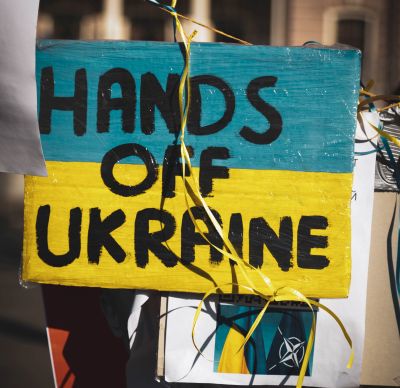
FEATURE — I’m at a loss. I’m not sure what I can write — what I should write — that would make sense of this current madness.
I have no insight into Putin. I have no direct aid line to Kyiv. I have no clairvoyance about what sanction on the laundry list of them will finally tip the scale. Or if the scale will tip.
I have no salve.
And I am struck with horror.

But not only the horror of Russia invading Ukraine. But there is plenty of horror for that.
It’s also all the murders in Ecuador. Three times as many in January 2022 as there were in January 2020. It’s the cartels in Mexico. It’s school shootings in the United States.
It’s also the man in Santa Fe, who on Monday evening shot a colleague he’d been feuding with for months in the middle of rush hour and a busy city street.
It’s the friend of my husband who laid down in traffic at 1 AM on Tuesday to end his life in a suburb of Salt Lake.
It’s madness. All of it.
What Putin is doing in Ukraine is that madness amplified. And it is in no way excused.
Yet it feels old and new at the same time.
Old in that land grabs, colonialism, brutality, and aggression are possibly the only constant refrain throughout humankind’s existence. Look to the Bible. Look to the Odyssey. Look to America.
I was in Santa Fe earlier this week to not only bear distant witness to the rush hour shooting, but also to bear witness to some of America’s own complicated history with war close to home.
Complicated history I’d somehow forgotten.
Complicated history of which I was reminded of during a walking lecture about Willa Cather her famous southwest inspired novel, Death Comes for the Archbishop.
But you can’t learn about what inspired the book without learning about New Mexico. And you can’t learn about New Mexico without learning about all the land revolts, disputes, and acquisitions.
First, New Mexico was the Pueblo’s land. Then, it was Spain’s. Next, it was Mexico’s and then, it was America’s – spoils from the Mexican-American War.
Yes, the horror is old indeed. But new, also.
New in that the world feels different from our time in pandemic. It feels raw. It feels boiled up.
The way we describe it in my home is that before the pandemic, people would wake up from a night’s sleep reset to an aggression level of one or two. And now, people wake up at a seven.
It doesn’t take long to get from seven to ten. And at ten, people do terrible things to each other and to themselves.
Right before the pandemic shut the world down, I attended a lecture at Kingsbury Hall with poet David Whyte. He recited his poems, and he shared their origin stories – a “behind the poetry” so to speak.
One story that stuck with me from then until now involved him near death and hallucinating in a village manger at the base of the Himalayas.
While infection wracked his body, Whyte says he looked up at the sky and had an epiphany only a poet could: the rain housed in the clouds above him was the same wet substance as was in the village stream. It was the same thing that was in the river miles below. And it was the same thing that was in the seas beyond that and the oceans beyond them.
It was only people who make the distinction between them. To the water, it is all the same.
Perhaps there is a lesson there for us. And maybe if we understood that people are all the same, too, we would stop fighting each other – and ourselves.
Kat Dayton is a columnist for St. George News. Any opinions given are her own and not representative of St. George News staff or management.
Copyright St. George News, SaintGeorgeUtah.com LLC, 2022, all rights reserved.